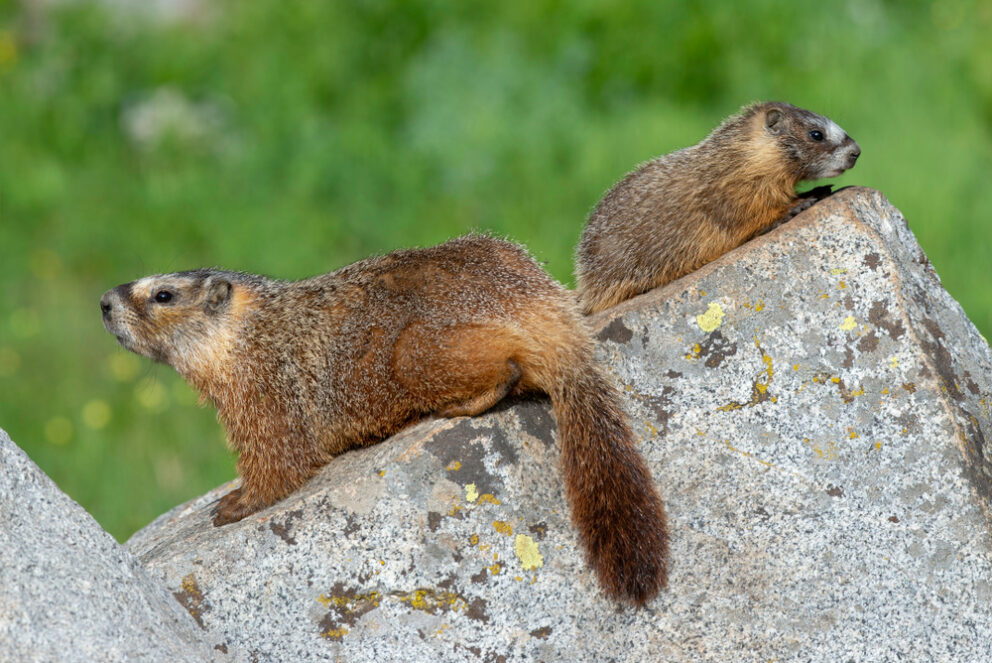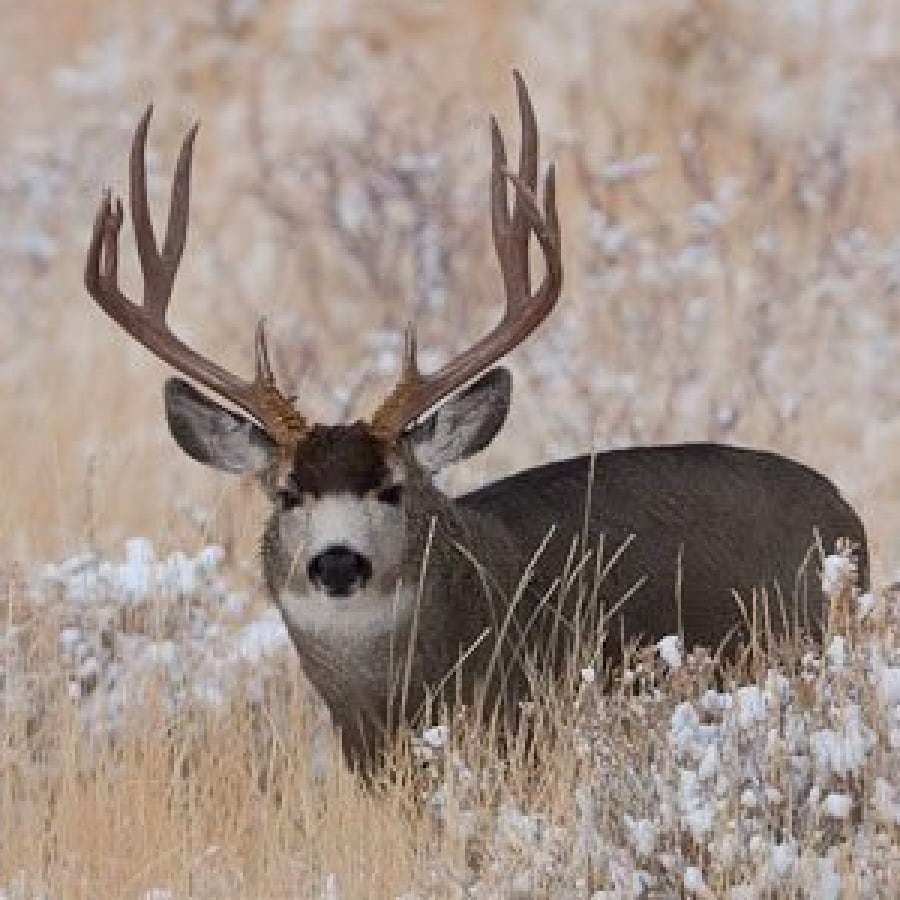- SCIENTIFIC NAME
- Marmota flaviventris
- CLASSIFICATION
- Mammal
- LIFE SPAN
- 10-15 Years
- SIZE
- 18-28” | 3-10lbs
- STATE CONSERVATION STATUS
-
- Unprotected
- FEDERAL CONSERVATION STATUS
- Least Concern
- GAME STATUS
- Non-Game
- GAME TYPE
- None
- Washoe
- Humboldt
- Pershing
- Churchill
- Mineral
- Lyon
- Douglas
- Carson City
- Storey
- Elko
- Lander
- Eureka
- White Pine
- Esmeralda
- Nye
- Lincoln
- Clark
Habitat & Range
Yellow-bellied Marmots are distributed widely in the western United States and Canada. They range as far north as southcentral British Columbia and Alberta in Canada and as far south as the Sierra Nevada.
- Alpine forests of the Sierras
- Grasslands
- Upland Forests
Threats
- Habitat Degradation
- Predation
Natural History
Most Yellow-bellied Marmots mate during May and June. The gestation period is for about 30 days, 3 to 8 pups in a litter. The young start to leave their nest at about 3 weeks of age and are weaned by 5 weeks old. The adult male will drive out his male offspring when they wake from hibernation. They’ll spend more than half of the year in hibernation, which can last from September to May depending on their home elevation.
These large rodents eat a large range of plant types, including grasses, flowers, and forbs. In late summer, large numbers of seeds are eaten. Food might be limited in areas where snow cover remains into the spring. They are selective feeders and are known to reject parts of plants that are toxic.
Fun Facts














